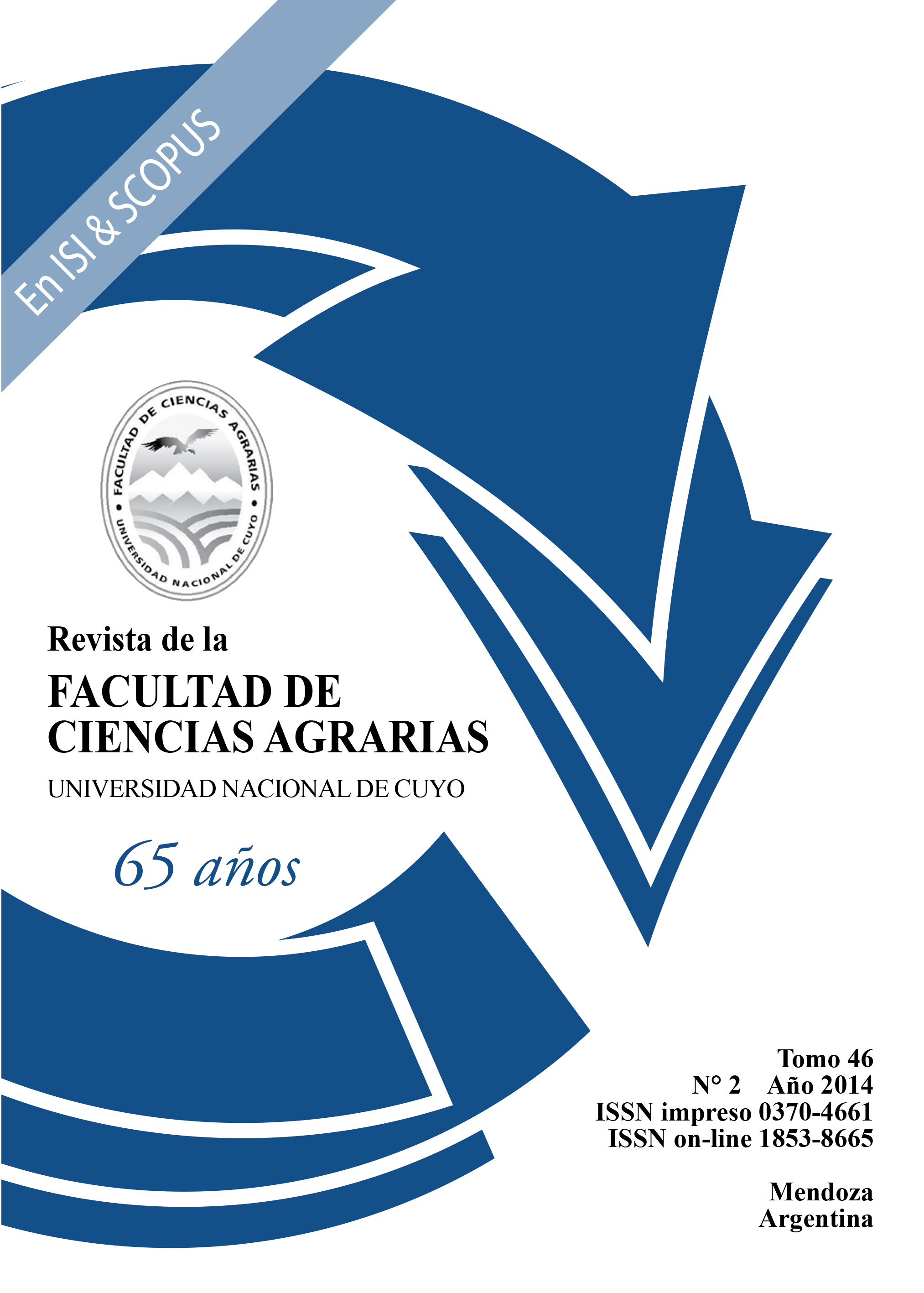Biological control of Fusarium graminearum: use of Trichoderma spp. and biofumigation with aerial part of Brassica juncea
Keywords:
in vitro, cultivo dual, antagonismo, biocontrol, biofumigación, BrassicáceasAbstract
The aims of this work were: to determine feasibility of the combination of two biological control methods: application of antagonistic fungus Trichoderma spp. and biofumigation with the aerial part of Brassica juncea in the end of fruiting stage; to evaluate their effect on the growth of the pathogen Fusarium graminearum. Two doses (5 and 10 g) of triturated plant material from B. juncea were placed in plastic recipients. Petri dishes with potato glucose agar medium 2% and a disc inoculated with F. graminearum, or Trichoderma spp. or both fungi, were placed on top of the plant material. Plastic recipients were then closed and incubated at 25±2°C in darkness for 7 days. After that, the diameter of the colonies was measured. The results indicated that: i) when Trichoderma spp. and F. graminearum were biofumigated separately, fungistatic effect was not observed, ii) without biofumigant, Trichoderma spp. significantly inhibited growth of F. graminearum colonies, iii) the combination of Trichoderma spp. and the biofumigation with B. juncea showed synergic effect on growth control of F. graminearum. These in vitro results suggest that the growth of Trichoderma spp. and its potential biocontrol effect of F. graminearum, are not affected by biofumigation with B. juncea. Also, the combination of Trichoderma spp. and biofumigation with B. juncea, would have synergic effect on growth control of F. graminearum.
Downloads
Downloads
Published
How to Cite
Issue
Section
License

This work is licensed under a Creative Commons Attribution-NonCommercial-ShareAlike 3.0 Unported License.
Aquellos autores/as que tengan publicaciones con esta revista, aceptan las Políticas Editoriales.











.jpg)




